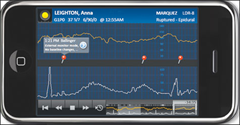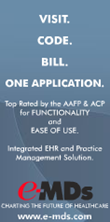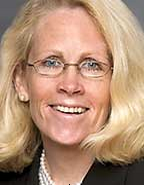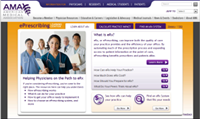News 4/14/09
The Rhode Island Department of Health releases two reports showing that almost 40% of the state’s physicians have an EMR, with 58% of those report using it more than 60% of the time. In addition, 25% use e-prescribing at least 40% of the time.
AirStrip Technologies receives FDA clearance for its AirStrip OB application for use on the iPhone. The software allows OBs to access virtual real-time and waveform data on mother and baby, direct from the hospital’s labor and delivery units.
AMA President-Elect J. James Rohack, MD sends a letter to USA Today, saying "physicians are eager to embrace new technologies" and that it’s "imperative that there are widely recognized interoperability and security standards in place." Good to know that he believes doctors are on board, even though most are still resisting today’s current technology. At HIMSS last week, we heard the word "interoperability" over and over again, as well as security and privacy. Everyone agrees they’re a necessity, though everyone has a slightly different spin on what interoperability is all about. How long will it take us to get there?
A New York Times article profiles the use of an EMR (from e-MDs) of a rural doctor, who summarizes as follows: "I’ll never go back to the old system. I can always look at the records by Internet, whether I am seeing patients at the nursing home or a clinic or the hospital, or even when I’m as far away as Florida. The change has been tremendously beneficial for my productivity.” For years, Mr. HIStalk has been saying that the main value of electronic records is being able to review and create electronic data from anywhere. Just getting data into an electronic form is where the payoff lives. HITECH should have rewarded providers for sharing data on a national framework such as NHIN, paying them per patient (or, even better, per record type). Using technology is one form of "meaningful use," but making data available to other providers is more so. The power is in the network, not the desktop, but paying for the former will encourage the latter.
A West Virginia doctor and a moonlighting medical resident are the subjects of an HHS search warrant, triggered by a tip that a local pharmacy was "handing out drugs like candy," including the dispensing of 3.2 million hydrocodone tablets in one year in the town of 200 people.
The Boston Globe exposes the potential inaccuracies with personal health records. The piece highlights some of the problems that occur with applications such as Google Health, which pull data from sometimes imprecise claims detail. The advent of ICD-10 codes will help, but don’t expect it to be the panacea. Meanwhile, doctors and patients may view such stories as a good excuse not to embrace PHRs.
BCBS of Minnesota and American Well announce an agreement to provide Online Care services in Minnesota. The program will provide BCBS’s 10,000 employees and family members the option for real-time live interactions with medical care providers via virtual clinics and will connect with HealthVault.
A local newspaper details some of the struggles facing South Carolina physicians as they move to EHR. Among those sited: costs, concerns about the long-term viability of vendors, and the current lack of standards.
The 80 physicians at Elmhurst Clinic (IL) claim it took several years to go fully paperless, but now say their monthly charges are up by more than $1 million. In addition, 2,700 square feet of space previously dedicated to paper chart storage is now office space. Physicians say the move to EHR aids in physician recruitment, facilitates research, and has allowed them to expand the practice.
A national survey of medical offices finds that 18% of offices are observing a 10-25% increase in accounts receivable over the last year. In addition, 28% of the offices are experiencing a 10-25% increase in bad debt expense.
A survey reveals that 67% of medical offices with four or more physicians do not use EMR software. The number drops to 60% without EMR for practices with 26+ physicians. Guess it’s a great time to sell EMR if you have a great product.










The article about Pediatric Associates in CA has a nugget with a potentially outsized impact: the implication that VFC vaccines…